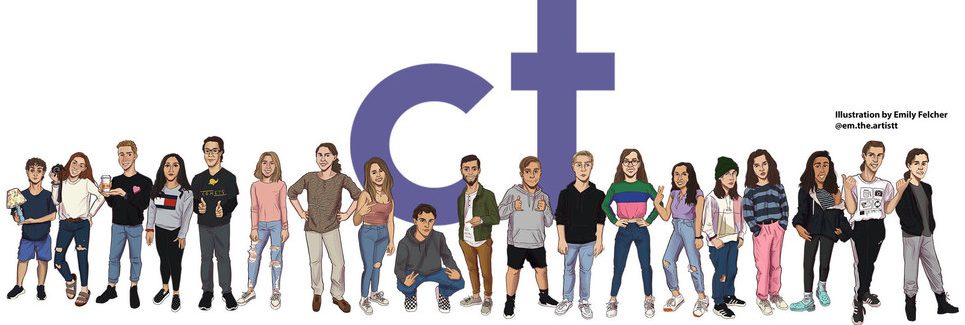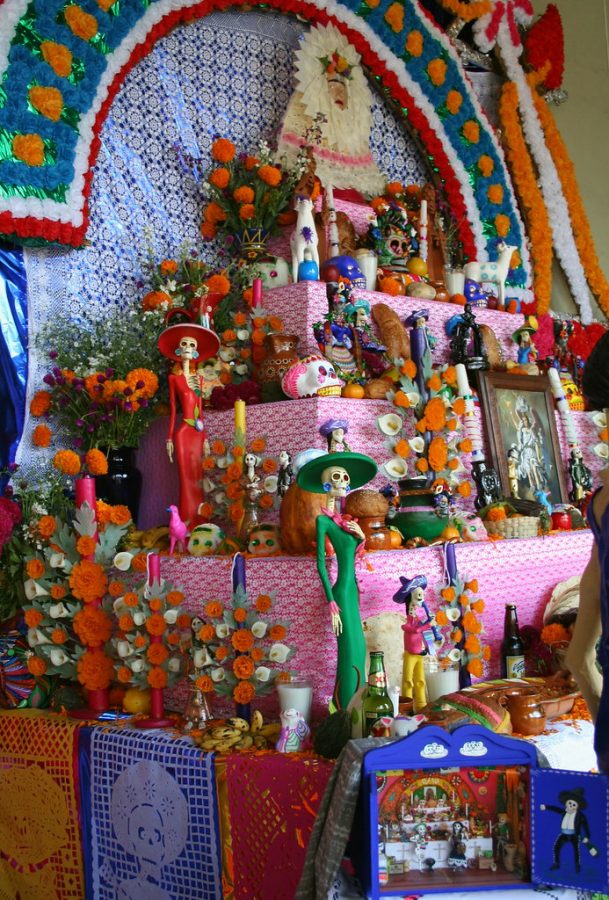Dia de los Muertos is NOT Mexican Halloween
November 2, 2021
Every year hundreds of thousands of people with Mexican heritage join in the celebration of the dead and the living. The first two days of November mark Dia de Los Muertos or Day of the Dead.
Day of the Dead is a celebration of the dead reuniting with the living. The holiday dates back to the Aztecs, nearly 3000 years ago, with Spanish and European influences as well.
“The Aztecs originally dedicated a festival to their ‘Goddess of the Dead,’ Mictecacihuatl,” said Grand Ledge High School Spanish teacher, Mrs. Diezel.
“The Aztecs also believed that the deceased would have to travel for a long time to get to the ‘Land of the Dead,’ and would leave food and water at their gravesites to help them on their journey.”
In Europe, before the Roman Catholic Church took over, pagans celebrated a holiday honoring the dead. This holiday consisted of food, family, friends, and fun! When the Roman Catholic Church came to power, the traditions combined with all saints day.
Spain practiced similar traditions as the Aztecs. Food and gifts were brought to the graves and tombs of the family’s loved ones, while also spreading flowers and lighting candles. They did this to show the dead their way home.
When the Spanish conquistadors came to this continent, they brought many of their traditions which eventually integrated with Aztecs and what became Mexican traditions.
Today in Mexico and neighboring countries, “Families decorate altars for their deceased loved ones and leave “ofrendas” (offerings) of their favorite things — foods, drinks, etc. — to welcome them home.” Explained Mrs. Dietzel
For the first day of the celebration, Dia de Los Angelitos (spirits of the children), families leave candies and toys. For the second day, Dia de Los Difuntos (spirits of the adults), families leave tequila and more adult items.
Families also leave Calaveras (sugar skulls) on ofrendas. These sugar skulls are decorated by the families and often hand-made. The skulls feature a bright and wide color palette, just like everything else in the holiday!
Another well-known symbol of the Day of the Dead are marigolds. Because of their bright colors and delicious scent, it is believed they attract the spirit of the dead. As seen in the movie Coco, marigold petal paths are created to show the dead to their altars.
Movies like Coco, The Book of Life, and The Big Wish, rather accurately depict the celebration, the family-ness, and the bright and beautiful colors the holiday presents, especially Coco. These movies help educate the younger generations about this beautiful holiday.
In the United States, many Latinos and Americans celebrate Dia de Los Muertos. Michigan does not have that large of a Latino population, but some cities have hosted celebrations including Holland, Jackson, and Livonia.
In contrast, almost every major city in California hosted a celebration today, yesterday, or in late October. The traditions of Day of the Dead continue to live on and spread to other parts of the world.
“The entire holiday is a happy occasion. It’s a celebration of life instead of a mourning of death.” Said Mrs.Dietzel


